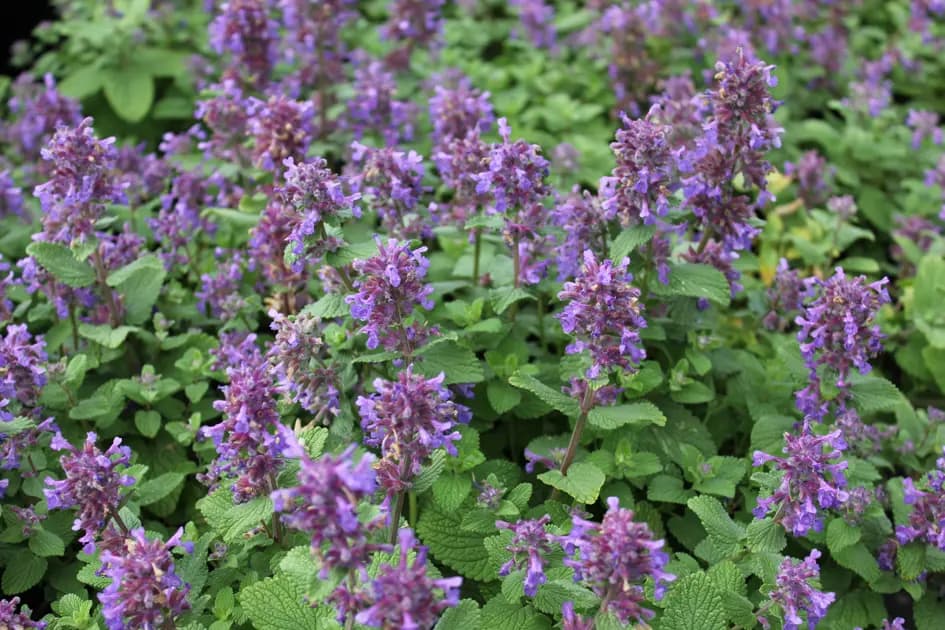
Scientific Name
Nepeta cataria
Common Names
Catnip
Plant Family
Lamiaceae
Location
Native to Europe and Asia, now widely naturalized in North America. Grows in disturbed soils, field edges, and home gardens. Thrives in full sun and average soil.
Description
A soft-stemmed, aromatic perennial with fuzzy, gray-green leaves and small clusters of pale purple or white flowers. Square stems typical of the mint family. Loved by cats for its euphoria-inducing properties.
Uses
Used principally for its soothing effects on the digestive, respiratory, and nervous systems. It acts as a carminative and spasmolytic, easing gas, bloating, and intestinal cramping, and helping with diarrhea and stomach discomfort in traditional use. Its essential oil and extracts exhibit anti-inflammatory and analgesic / anti-nociceptive actions, which lend relief for localized pain, rheumatism, headaches, and inflammatory conditions. It has antimicrobial and antifungal properties: laboratory studies show activity of its essential oil (rich in nepetalactones, monoterpenes, etc.) and extracts against bacteria and fungi (including Candida albicans) ‒ useful in skin, respiratory, or digestive infections. There is also narcotic / sedative-nervine value: catnip tea or infusion has been traditionally used to calm anxiety, aid sleep, and alleviate tension. In the respiratory system, it is employed as an expectorant and antitussive, helping loosen phlegm in coughs, bronchitis, asthma, or cold symptoms. Other traditional uses include fever-reducing (diaphoretic), relief of sore throat, headache, nausea, and supporting female issues (e.g. mild menstrual pain). Its essential oil also has insect-repellent and insecticidal effects, making it useful for external as well as internal applications.
Energetics
Cooling, relaxing, slightly drying. Softens tension, especially when there's heat or restlessness.
Parts Used
Leaves and flowering tops
Constituents
Volatile oils (nepetalactone), tannins, flavonoids, bitter principles
Dosage
- Tea: 1–2 tsp dried herb per cup; steep 10 min
- Tincture (1:5): 20–40 drops as needed
- Infused honey or glycerite: For children
Notes on Use
A favorite for children — safe, gentle, and effective for upset bellies or restlessness. Also good for anxious adults who need a soft touch. Often blends well with lemon balm or chamomile.
Harvesting
• Harvest before full bloom, when leaves are aromatic. Dry quickly in shade to preserve volatile oils.
Contraindications
Avoid high doses in pregnancy. Generally, very safe.
Recipes
- Kid’s Calming Tea: Catnip, chamomile, fennel
- Chillout Glycerite: Catnip, lemon balm, lavender in glycerin